Common Summer Weeds in North Carolina
Summer in North Carolina means a lot of things: weekends at the beach, grilling out, and – unfortunately – weeds in your lawn.
Whether you have Bermuda, Centipede, Zoysia, or St. Augustine grasses, your lawn is susceptible to these stubborn weeds. Here are a few of the most common summer lawn weeds in NC and tips on how to eradicate them.
Common Summer Weeds in NC Lawns
1. Crabgrass
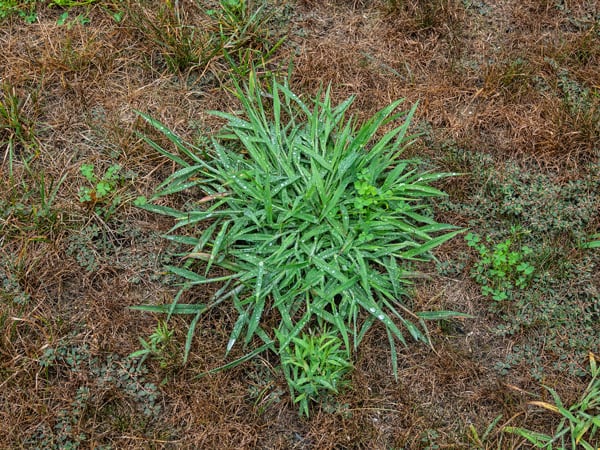
In North Carolina, crabgrass germinates between March – May, so it starts showing up over the summer. Crabgrass stays low to the ground, typically spreading out horizontally (like a crab’s legs) rather than growing tall. Because of the way it grows, your lawn mower blades may not even touch it.
As one of the most common summer weeds, Crabgrass is very tricky to prevent and control. It is best controlled with a pre-emergence weed control in February, before it can germinate. Once it has germinated and begins growing, you can attempt to kill the weeds with post-emergent herbicide.
2. Goosegrass
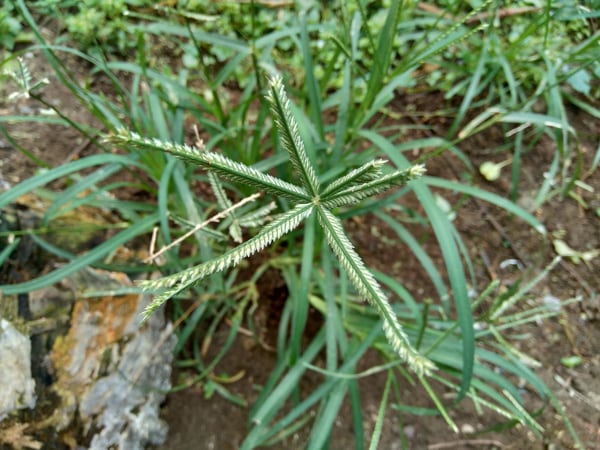
Goosegrass is commonly seen in NC lawns that are mowed short in compact soil. The blades of goosegrass are dark green, may grow up to 12 inches in length, and can be flat or slightly folded. It grows in a bunch of low, flattened stems. Like crabgrass, your lawnmower blades may not even touch it since it grows so low.
Maintaining healthy soil and turf is the best way to prevent goosegrass, although pre-emergent herbicides can be used, as well.
3. Foxtail
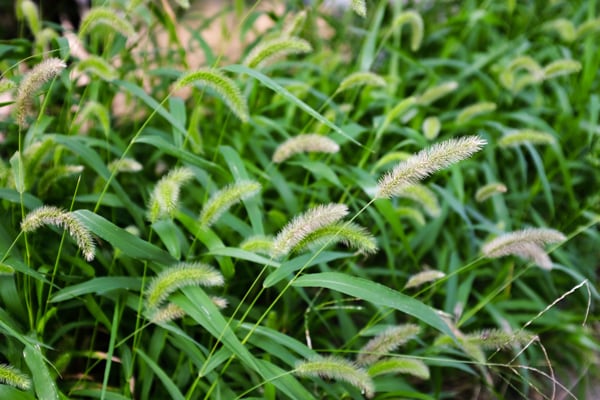
Foxtail is a bright green weed with short bristles on the end, looking like a cross between wheat and the cattail plant. This weed is commonly seen alongside the road, but it can appear in otherwise well-maintained turf.
You can prevent foxtail by maintaining a dense, healthy lawn and fertilization. This helps prevent foxtail from being able to establish itself. Pre-emergent herbicide is another great step to help prevent foxtail from growing. Post-emergent herbicides are available, although they can be harmful to other plants in your lawn, so it is best to leave application of post-emergent herbicides for foxtail to the professionals.
4. Nutsedge
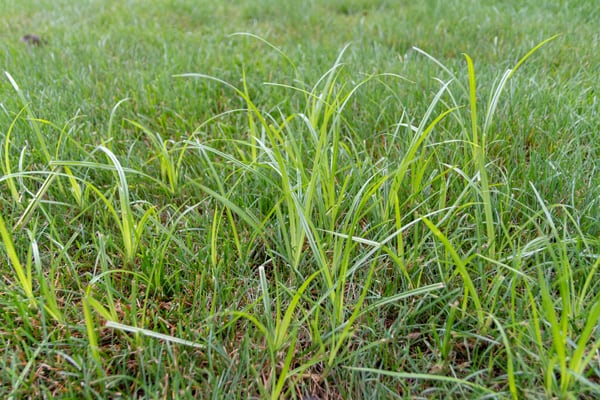
Nutsedge is an aggressive weed that can be difficult to get rid of. It can show up in your lawn and vegetable or flower gardens. Nutsedge is sometimes called “nutgrass” because it resembles grass. You can differentiate it from grass by looking at the stems, which are V-shaped. In addition, nutsedge leaves are thicker and stiffer than grass and appear creased.
Because it is so aggressive, we recommend mechanical, cultural, and chemical methods to control it. Because it thrives in areas with poor drainage, be especially careful with areas of your lawn that don’t drain properly. You can also help prevent nutsedge by mowing at the proper height for your grass type, applying fertilizer regularly, and maintaining the right soil pH. If you physically pick weeds from your lawn, you will need to dig at least 10 inches down to get the entirety of nutsedge. Post-emergent herbicides are also available to get rid of nutsedge.
5. Spurge
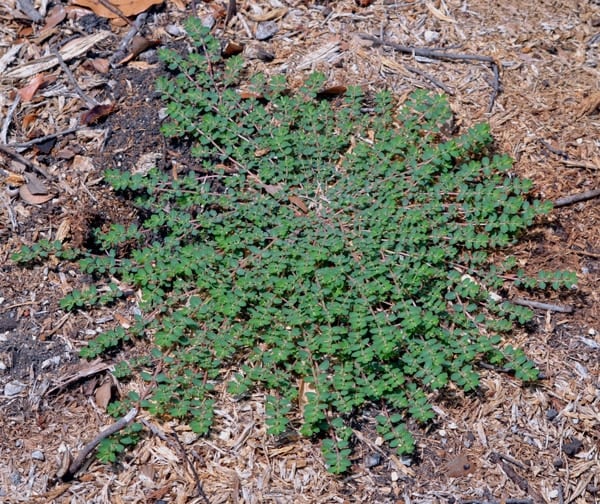
Spurge is a common broadleaf summer weed in NC because it thrives in the heat. If not treated quickly, it can take over your entire lawn. Like other summer weeds, it grows low to the ground. The stems have small leaves directly across from each other.
If you know you have a spurge problem in your yard, we highly recommend applying a pre-emergent herbicide each spring and fall. This will help stop it before it has a chance to germinate. If you notice spurge popping up in your lawn, applying a post-emergent herbicide as soon as possible will give you the best chance at getting rid of it. Younger spurge is much easier to kill. Just ensure the herbicide you use is safe for your grass type.
6. Lespedeza
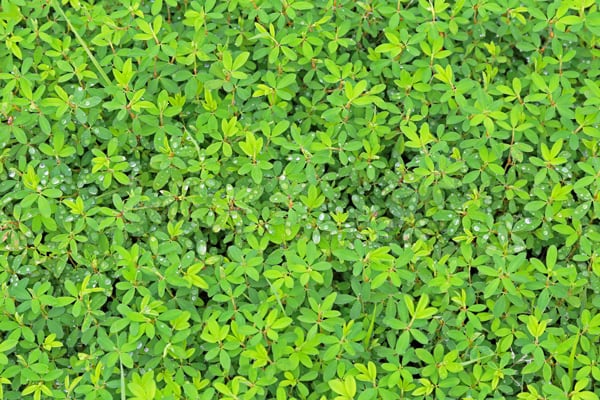
Also called Japanese clover, lespedeza has small oval leaves similar to clover. As the weed matures, the stem gets woody, and you may see pink or purple flowers. It also grows low to the ground and thrives in thin, dry, compact turf.
Keeping your lawn properly fertilized and maintaining a regular mowing schedule will help prevent lespedeza from taking hold. Pre-emergent herbicides are also effective. If lespedeza still infests your warm-season lawn, a three-way post-emergent herbicide is effective at removing this common weed.
7. Doveweed
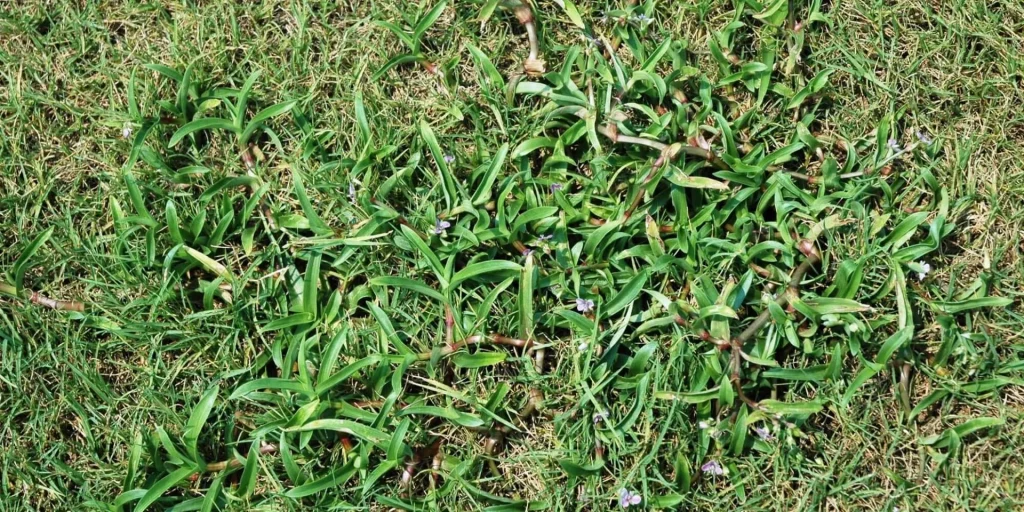
Doveweed becomes a problem later in the season. It can appear as early as July, but will typically become more evident in mid-late August. At first glance, it looks like grass, but as it grows, it will develop short stalks with clusters of small purple flowers.
Because it starts showing up in late summer, getting ahead of it with proper turf care in the spring and early summer is the best way to prevent it. Dense turf cut to the proper height for your grass type is a good doveweed deterrent, but if proactive lawn care doesn’t prevent it from growing, post-emergent herbicides may be used. Just be sure that the treatment you are using is appropriate for your turf type.
Trust Your Turf to Barefoot Lawn Care
Not sure which summer weeds have taken hold in your lawn, or just want to leave it to the pros? We’re here to help! Our weed control and fertilizer applications keep your NC lawn healthy and weed-free year round. Get started by requesting your free quote!